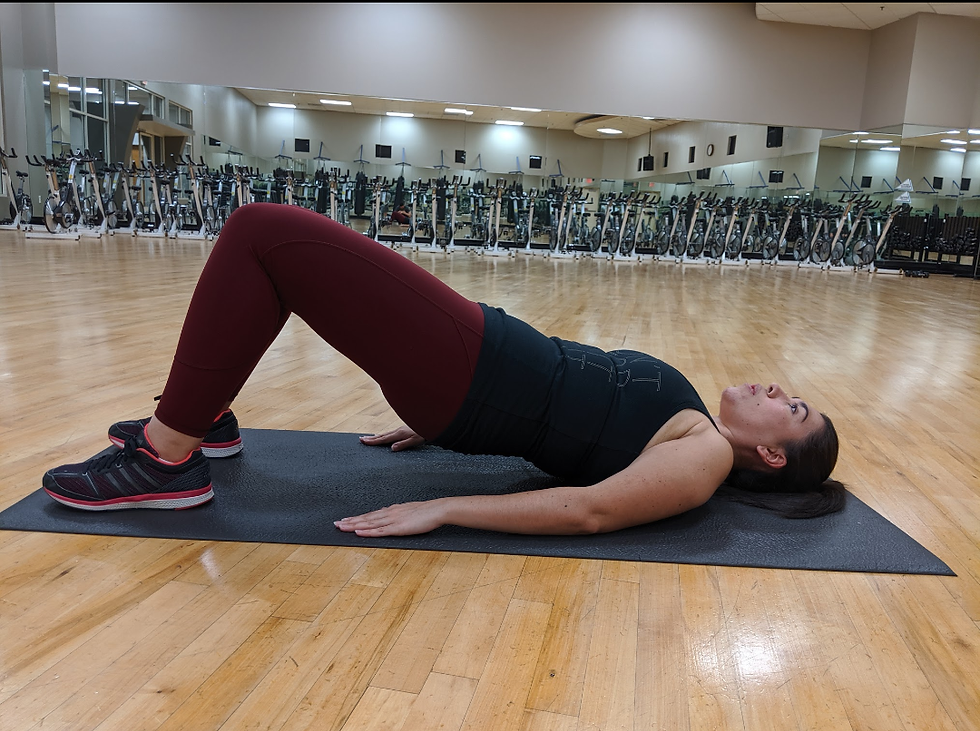Pelvic Floor Therapy
- Christina Nunez

- Feb 5, 2020
- 3 min read

It was 2018, I was in the deep of my postpartum depression and I only felt like I was going deeper. If you read my blog post about my experience with postpartum depression, you know that I struggled with a bladder prolapse after the birth of my daughter. I knew things didn't feel right downstairs but I thought, ok I did just give birth to a 7 pound baby so things are probably going to feel different for a good while. I went back to the gym and after a couple of weeks back, I started to feel an urgency to pee. I couldn't control it and it came without warning. I had to be near the bathroom at all times to avoid having an accident so it made me stop working out and stop leaving the house at all. Anytime I sat, no matter if the surface was soft or hard, it felt like I was sitting on a small balloon. I went to the OB and was told I had a bladder prolapse. After getting that news, I sank into a deeper depression. All I could think was how would I ever be able to be a personal trainer like that?
I started pelvic floor training to rehab my weak pelvic floor muscles. The first couple of sessions were full of tears and desperation. I told the physical therapist that I was distraught because I was a personal trainer and I thought I'd have to give it up. She assured me that I would be fine with some work so I eventually turned the tears and desperation into determination to get back to as normal as I could possibly be. I went through pelvic floor rehab training for months and started to feel better with time. I started with biofeedback where a device is inserted into the vagina to help control and strengthen the pelvic floor muscles. It took a while before I even knew what isolating those muscles actually felt like. I went on to doing exercises while wearing a pessary which is like a small removable ring that's inserted in the vagina and holds your prolapsed organ up (in my case it was my bladder). I didn't want to depend on the pessary so I didn't use it all the time, I had to learn to accept that I needed it for a while so eventually it became part of my daily routine especially when I had clients to train. It took a long time but I got rid of the urgency, I was in control again and I didn't feel that balloon feeling anymore. I felt more and more like myself. I pushed the limits a couple of times and ended up going backwards once or twice. I learned that I will have limits and I may never go back to "normal" but I was able to keep a level of activity that was adequate for effective exercise. I can't do high impact exercise without eventually getting some consequences but there are safe alternatives for everything in fitness. Months of therapy, working out and rehab sessions paid off.
I want you to know that if you pee a little when you cough, sneeze, laugh, run or jump it's not normal, nor is it funny. You can get help and you can rehab yourself to get back to normal or as close to normal as possible. Women are especially vulnerable during pregnancy and childbirth but this is not just something that happens due to childbirth. This can happen to women and men for multiple reasons including childbirth and obesity. I'd be lying if I told you I haven't felt a little anxiety about it happening again during my current pregnancy but I know that I rehabbed once before and I know I can do it again. Also, I've been doing kegels and other things that I did during pelvic floor therapy throughout this pregnancy and that's one thing I didn't do last time.
Here's a little pelvic floor treat for you:
-10 kegels a quick one second hold and release.
-10 kegels 10 second hold and then release.
-5 second pelvic bridge as pictured above, lower your bottom back to the floor. Repeat 10 times.
You're welcome!
#pelvicfloorphysicaltherapy #postpartumdepression #postpartum #pelvicfloorexercises #postpartumanxiety #pelvicfloordysfunction #pelvicfloor #selflove #selfcare #pessary #selfesteem #biofeedback #postpartumanxiety #biofeedbacktherapy #therapyhelps #beyourbest #personalgoals #youcanrecover #pelvicfloortraining #whatnobodytellsyou #kegels #incontinence
#postpartumrecovery #ppd #bladderprolapse
#bladderproblems #physicaltherapy #mamacitafitness #youcandoit #mamacitafitnessofficial




Comments